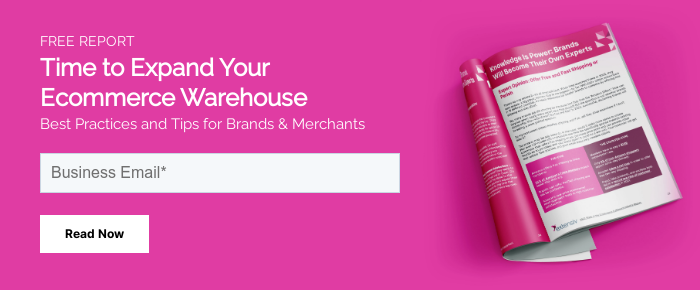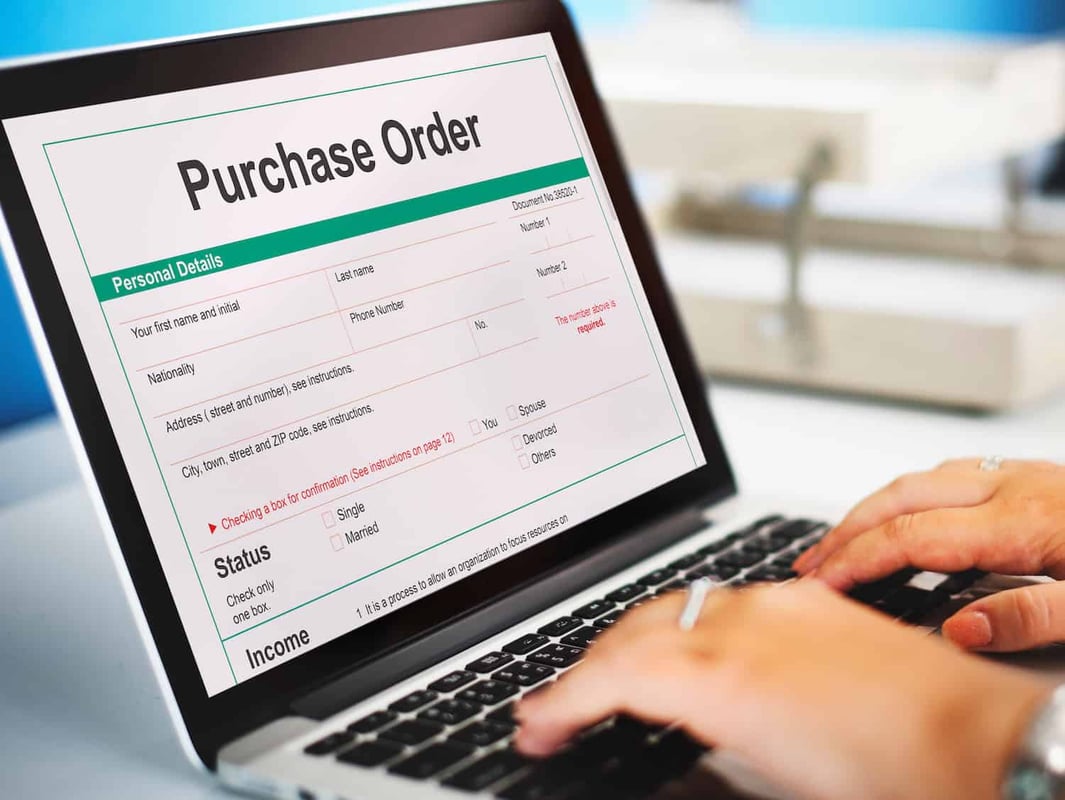If you are starting out as a small business owner, or hoping to climb the ladder and run your own warehouse one day, you need to know the ins and outs of warehouse management. And warehouse management includes understanding purchase orders and how to use them to grow your business.
As we uncover the ins and outs of purchase orders in this ultimate guide, you’ll likely see some of these related terms:
- Procurement: Every activity involved in obtaining the goods and services a company needs to keep its daily operations running. (ie- Negotiating, keeping records, inspecting goods, sending invoices, completing purchase orders, etc.)
- Vendor/Supplier: The party in the supply chain that makes goods and services available to consumers. Typically, the vendor is not the manufacturer of the goods itself.
- Buyer: The individual consumer or company that purchases the goods from the vendor.
- SKU Number: “Stock Keeping Unit,” number of 8 digits that retailers assign to products to keep track of inventory.

What Is a Purchase Order?
Simply put, a purchase order (PO) is a legally binding document created by a buyer and presented to a seller. The PO is a list of what the buyer wants to purchase, and it includes the order details, such as:
- The types of products
- The quantity of each product
- Payment terms
- Delivery details
A purchase order is legally binding because when the buyer submits an order, they are committing to purchase goods or services for an agreed-upon amount. This document protects and insures the vendor against non-payment because the order gets filled before the buyer receives a bill.

How Does a Purchase Order Work?
Purchase orders are typically used by businesses that order large quantities of goods from a warehouse. To understand how the process works, we’ll set up an example:
In this purchase order example, a craft supplies store needs to buy many different types of paintbrushes from a supplier. In order to get the paint brushes they need, they would follow this process:
- The craft store owner creates a purchase order and lays out exactly which paint brushes they need from the supplier and how many of each.
- If the vendor has enough inventory to complete the order, they’ll accept the purchase order, fulfill it, send the paintbrushes out for shipment, and deliver them on the agreed-upon date.
- When the paintbrushes are delivered, the vendor will send an invoice (bill) for the purchased items.
- The craft store owner pays for the paintbrushes, and the sale is processed through the vendor’s point of sale (POS) system.
When a buyer and vendor have established a relationship, they can set up special kinds of purchase orders if they want: a standing purchase order or a blanket purchase order.
- Standing purchase order: Allows a buyer to purchase the same products many times using the same PO number.
- Blanket purchase order: An agreement between both parties that arranges multiple deliveries over a set period of time for a set price. These are usually only offered between companies with strong relationships, and they can come with discounts.
How to Create a Purchase Order
Creating a purchase order is pretty simple once you find a template you like. You can either use online software or create a simple document in a word processor like Microsoft Word or Google Docs. Every purchase order needs to include the following details:
- PO number
- Products needed and the quantity of each
- Issue date
- Product details (SKU numbers, brand names, model numbers)
- Price of each product per unit
- Delivery date
- Shipping and billing address
- Company name & contact info
- Terms for payment
At the bottom of a purchase order, place the total order amount (of products), the total price, and an authorized signature.
Many people notice that purchase orders and invoices look very similar. Which brings us to…
What’s the Difference Between a Purchase Order and an Invoice?
Purchase orders and invoices are two essential documents in the procurement process that keep things moving and operating as they should. Since they both deal with commerce-related communications and finances, many people get them confused, but they have some fundamental differences.

Similarities Between Invoices and Purchase Orders
Let’s start with the similarities between purchase orders and invoices because there are a few! Some similarities are:
- Companies/warehouses need both of them to operate
- Both are commercial communications about purchases
- Both include basic order details, prices, shipping information, and vendor info
- Both documents are legally binding
- Both help streamline the purchasing process
Differences Between the Two
Even though there are numerous similarities between purchase orders and invoices, there are even more differences.
Ultimately, a purchase order outlines the list of items a buyer would like to purchase. On the other hand, an invoice is an official payment request that outlines the amount of money the buyer owes the vendor.
Some key differences include:
- A purchase order is an order confirmation sent by the buyer to the vendor. But an invoice is a payment reminder sent by the vendor to the buyer.
- A purchase order is created when a buyer places an order, and an invoice is created after the order is fulfilled.
- A purchase order outlines the terms of the purchase while the invoice defines the confirmation of a sale.
- Purchase orders help prevent overstocking inventory and invoices help prevent duplicate payments.
- Purchase orders help track inventory and invoices help organize cash flow and taxes.
Why You Should Automate the Purchase Order Process
The old-school paper-based purchase order system has worked for many years. However, as the rest of the world adopts technology and automated processes, warehouses need to keep up. If you’re still using a paper-based system at your warehouse, you’re more-than-likely creating too many documents, causing things to be inefficient.
Good record keeping is an essential aspect of procurement, but paper records can easily be damaged or lost. Plus, creating duplicate documents costs your company time and money. Filing systems take up a lot of space in your office, and it takes a lot of labor to keep a paper-based record system running smoothly.
All that time and money could be better allocated elsewhere so that your team has more time to work on other important things that keep your warehouse running smoothly.
Automating your purchase order process and warehouse inventory is the modern solution to an old-school problem. With a technology-based process, all your important documents, SKU numbers, and assets are in one place. And with technology, that “one place” is a lot smaller than rows and rows of filing cabinets!
At Extensiv, we’re proud to offer Extensiv Warehouse Manager: our cloud-based inventory management software. Extensiv Warehouse Manager helps you streamline processes, track your inventory, and maintain accuracy while growing your business. You’ll never lose track of your SKUs because they are stored in the cloud for easy access.
Modern Warehouses Need a Partner Like Extensiv
From purchase orders and invoices to SKU numbers and inventory tracking, running a warehouse is no simple feat. Just like how purchase orders help keep your business organized, so does important technology like a warehouse management system.
If you’re ready to increase your warehouse’s productivity and revenue, (and we know you are), contact us today! You can try out a free demo, learn about different integrations, and create a fully customized solution for your warehouse.






